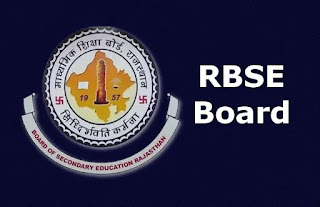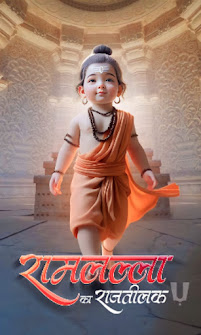 |
| Save Money For Better Future |
Saini_Royals
Monday, November 18, 2024
वित्तीय प्रबंधन के लिए एक मार्गदर्शिका 💰💵💰💰
Sunday, November 17, 2024
Delhi Air Pollution Reached High Peak🙄😯😮
Delhi Air Pollution Reached High Peak🙄😯😮
Now a Days the Air pollution is increases day by day in Delhi. Which causes Various Problems to Nature and to the People Living there. This pollution affects to various people and causing Health related issues.
According to the Central Pollution Control Board (CPCB), the air quality index (AQI) of Delhi was 457 ('severe plus's) which is highest in the our Country. The Air Quality measurement of Delhi is increases by day by day and from last four days it is very high.
According to the Research and analysis Of Air Quality Management, Stubble burning was the highest contributor to Delhi's Pollution Approx. 35% of the total percent
The Delhi Government Has Taken Action to reduce the Air pollution in Delhi. Government has taken decision to ban the private and diesel vehicles that are travelling in the Delhi. Government also prohibited the entry of petrol and diesel buses that coming from other cities or states. Entry will be given to the CNG and Electrical vehicles only.
Private or diesel vehicles or taxi were banned and if they violates rule there will be penalty of 20,000 Rupees. Diesel and petrol inter-state buses form the NcR cities to Delhi are also Banned.
Delhi Environment Minister- Gopal Rai said that the 84 teams and 280 members are deployed for catching the violators of the rule. Teams will manage and will charge fine from the Violators.
Gopal Rai Said that the Government will start 106 shuttle buses and the Metro Train will make extra 60-70 rounds daily to Promote Public Transport. There will be a complete ban on Construction and demolish of Buildings and Homes till further notices issued by the Government.
Monday, January 15, 2024
RBSE Board Exam Time Table OUT
RBSE Board Exam Time Table
As per the official schedule, the RBSE Rajasthan Board 10th Exams 2024 will be held from March 07 to March 30, while the RBSE 12th Exams will be held from February 29 to April 4, 2024.The timing for the exam will be 8:30 AM TO 11:45.
Exam date | Subject Papers |
March 7, 2024 | English (02) |
March 12, 2024 | Hindi |
March 16, 2024 | Social Science |
March 20, 2024 | Science |
March 22, 2024 | Agriculture (110) |
Mar 23, 2024 | Sanskrit |
March 27, 2024 | Mathematics |
March 30, 2024 | Third Language- Sanskrit (71)/ Urdu (72)/ Gujarati (73)/ Sindhi (74)/ Punjabi (75), Sanskrit (Second Paper) |
Exam Dates | Subject Papers |
February 29, 2024 | Psychology (19) |
March 1, 2024 | Public Administration |
March 2, 2024 | Computer Science (03) / Informatics Practices (04) |
March 4, 2024 | English Compulsory (02) |
March 5, 2024 | Vocal Music (16) / Dance Kathak (59) |
March 6, 2024 | Sanskrit Literature (12) / Sanskrit Literature (94) |
March 9, 2024 | Geography (14)/Accountancy (30)/Physics (40) |
March 11, 2024 | painting (17) |
March 13, 2024 | Hindi Compulsory |
March 15, 2024 | English Literature (20) / Typing Script (Hindi) (34) |
March 16, 2024 | Philosophy (85) / General Science (56) |
March 18, 2024 | History (13) / Business Studies (31) / Agricultural Chemistry (38) / Chemistry (41) |
March 20, 2024 | Environmental Science |
March 21, 2024 | Political Science (11) / Geology (43) / Agricultural Science (84) |
March 23, 2024 | Mathematics |
March 26, 2024 | Home Science (18) |
March 27, 2024 | Physical Education (60) |
March 28, 2024 | Economics (10) / Quick Script Hindi (32) / Quick Script English (33) / Agricultural Biology (39) / Biology (42) |
March 30, 2024 | Rigveda (44) / Shukla Yajurveda (45) / Krishna Yajurveda (46) / Samaveda (47) / Atharvaveda (48) / Nyaya Darshan (49) / Vedanta Darshan (50) / Mimamsa Darshan (51) / Jain Darshan (52) / Nimbarka Darshan (53) / Vallabh Darshan (54) / General Darshan (55) / Ramanand Darshan (57) / Grammar Shastra (86) / Literature (87) / Ancient History (88) / Theology (89) / Astrology ( 70) / Oceanography (91) / Architecture (92) / Priesthood (93) |
April 1, 2024 | Hindi Literature (21) / Urdu Literature (22) / Sindhi Literature (23) / Gujarati Literature (24) / Punjabi Literature (25) / Rajasthani Literature (26) / Persian (27) / Prakrit Language (28) / Typographic Script ( English) (35) (The question paper of typing script should be started at 09.00 am.) |
April 3, 2024 | Sociology (29) |
April 4, 2024 | Automotive (101) / Beauty & Health (102) / Health Care (103) / Information Technology & IT Services (104) / Retail (105) / Travel & Tourism (106) / Apparel Manufacturing Clothing & Home Decor (108) / Electrical & Electronics (109) Micro Irrigation System (Agriculture) (110) / Plumber (111) / Telecom (112) |
Sunday, January 7, 2024
Look Of Shree Ram Mandir Ayodhya
Shree Ram Mandir Ayodhya
Foreign Traveller In India
Major Foreign Traveller In India
INDIA, with its vast landscapes, diverse cultures, and millennia-old history, has always attracted travelers from around the world. Over the centuries, numerous foreign travelers have visited this land, leaving behind invaluable records of their experiences, observations, and interactions. These accounts offer a unique perspective on India's socio-cultural, political, and economic landscape. In this blog post, we will explore some of the major foreign travelers in India and their contributions to our understanding of the subcontinent. Some of Foreign travellers are..
- Megasthenes :- Megasthenes was a Greek Historian. Visited INDIA in 304-299 BCE. Megasthenes came to India During the reign of Chandragupta Maurya.
- Hiuen Tsang :- Huen-tsang was a Chinese Buddhist Monk. Visited India in 630-645 AD. He came to India during the reign of Harshavardhana.
- Faxian :- Faxian was a Chinese Buddhist Monk. He visited India in 399-414 AD. During the reign of Chandragupta II ( Vikramaditya ).
- Ibn Battuta :- Ibn Battuta was a Maghrebi traveller, explorer and scholar. He visited India in 1333-1347 AD. During the reign of Muhammad bin Tughlaq.
- Peter Mundi :- Peter Mundi was an East India Company factor and the son of a Cornish pilchard merchant from Penryn. He visited India in 1630-1634 AD. During the reign of Shah Jahan.
वित्तीय प्रबंधन के लिए एक मार्गदर्शिका 💰💵💰💰
Save Money For Better Future यह मार्गदर्शिका आपको अपने पैसे पर नियंत्रण रखने में मदद करेगी । वित्तीय प्रबंधन को अक्सर अनदेखा कर दिया ...

-
Delhi Air Pollution Reached High Peak🙄😯😮 Now a Days the Air pollution is increases day by day in Delhi. Which causes Various Problems to...
-
Save Money For Better Future यह मार्गदर्शिका आपको अपने पैसे पर नियंत्रण रखने में मदद करेगी । वित्तीय प्रबंधन को अक्सर अनदेखा कर दिया ...
-
RBSE Board Exam Time Table As per the official schedule, the RBSE Rajasthan Board 10th Exams 2024 will be held from March 07 to March 30, ...











